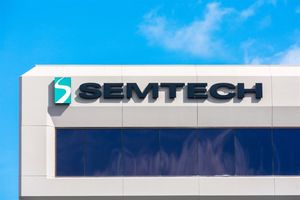
The world is witnessing an unprecedented surge in government intervention within the semiconductor industry, as nations across the globe commit colossal sums to bolster domestic chip manufacturing. This strategic pivot, driven by a complex interplay of geopolitical tensions, national security imperatives, and the escalating demands of artificial intelligence, marks a significant departure from decades of market-driven globalization. From Washington to Brussels, Beijing to Tokyo, governments are enacting landmark legislation and offering multi-billion-dollar subsidies, fundamentally reshaping the global technology landscape and laying the groundwork for the next era of AI innovation. The immediate significance of this global effort is a race for technological sovereignty, aiming to de-risk critical supply chains and secure a competitive edge in an increasingly digital and AI-powered world.
This aggressive push is transforming the semiconductor ecosystem, fostering a more regionalized and resilient, albeit potentially fragmented, industry. The motivations are clear: the COVID-19 pandemic exposed the fragility of a highly concentrated supply chain, particularly for advanced chips, leading to crippling shortages across various industries. Simultaneously, the escalating U.S.-China tech rivalry has elevated semiconductors to strategic assets, crucial for everything from national defense systems to advanced AI infrastructure. The stakes are high, with nations vying not just for economic prosperity but for control over the very hardware that will define the future of technology and global power dynamics.
The Global Chip War: Nations Vie for Silicon Supremacy
The current landscape is defined by a series of ambitious national strategies, each backed by substantial financial commitments, designed to reverse the offshoring trend and cultivate robust domestic semiconductor ecosystems. These initiatives represent the most significant industrial policy interventions in decades, moving beyond previous R&D-focused efforts to directly subsidize and incentivize manufacturing.
At the forefront is the U.S. CHIPS and Science Act, enacted in August 2022. This landmark legislation authorizes approximately $280 billion in new funding, with $52.7 billion directly allocated to domestic semiconductor research, development, and manufacturing. This includes $39 billion in manufacturing subsidies (grants, loans, loan guarantees) and a substantial 25% advanced manufacturing investment tax credit, estimated at $24 billion. An additional $11 billion is dedicated to R&D, including the establishment of a National Semiconductor Technology Center (NSTC) and advanced packaging capabilities. The primary goal is to revitalize U.S. manufacturing capacity, which had dwindled to 12% of global production, and to secure supply chains for leading-edge chips vital for AI and defense. The act includes "guardrails" preventing recipients from expanding advanced manufacturing in countries of concern, a clear nod to geopolitical rivalries. Initial reactions from industry leaders like Pat Gelsinger, CEO of Intel (NASDAQ: INTC), were overwhelmingly positive, hailing the act as "historic." However, some economists raised concerns about a potential "subsidy race" and market distortion.
Across the Atlantic, the EU Chips Act, enacted in September 2023, mobilizes over €43 billion (approximately $46 billion) in public and private investment. Its ambitious goal is to double Europe's global market share in semiconductors to 20% by 2030, strengthening its technological leadership in design, manufacturing, and advanced packaging. The act supports "first-of-a-kind" facilities, particularly for leading-edge and energy-efficient chips, and establishes a "Chips for Europe Initiative" for R&D and pilot lines. This represents a significant strategic shift for the EU, actively pursuing industrial policy to reduce reliance on external suppliers. European industry has welcomed the act as essential for regional resilience, though some concerns linger about the scale of funding compared to the U.S. and Asia, and the challenge of attracting sufficient talent.
Meanwhile, China continues its long-standing commitment to achieving semiconductor self-sufficiency through its National Integrated Circuit Industry Investment Fund, commonly known as the "Big Fund." Its third phase, announced in May 2024, is the largest yet, reportedly raising $48 billion (344 billion yuan). This fund primarily provides equity investments across the entire semiconductor value chain, from design to manufacturing and equipment. China's strategy, part of its "Made in China 2025" initiative, predates Western responses to supply chain crises and aims for long-term technological independence, particularly intensified by U.S. export controls on advanced chipmaking equipment.
Other key players are also making significant moves. South Korea, a global leader in memory and foundry services, is intensifying its efforts with initiatives like the K-Chips Act, passed in February 2025, which offers increased tax credits (up to 25% for large companies) for facility investments. In May 2024, the government announced a $23 billion funding package, complementing the ongoing $471 billion private-sector-led "supercluster" initiative in Gyeonggi Province by 2047, aiming to build the world's largest semiconductor manufacturing base. Japan is offering substantial subsidies, attracting major players like Taiwan Semiconductor Manufacturing Company (TSMC) (NYSE: TSM), which opened its first plant in Kumamoto in February 2023, with a second planned. Japan is also investing in R&D through Rapidus, a consortium aiming to produce advanced 2nm chips by the late 2020s with reported government support of $3.5 billion. India, through its India Semiconductor Mission (ISM), approved a $10 billion incentive program in December 2021 to attract manufacturing and design investments, offering fiscal support of up to 50% of project costs.
Reshaping the Tech Landscape: Winners, Losers, and New Battlegrounds
These national chip strategies are profoundly reshaping the global AI and tech industry, influencing supply chain resilience, competitive dynamics, and the trajectory of innovation. Certain companies are poised to be significant beneficiaries, while others face new challenges and market disruptions.
Intel (NASDAQ: INTC) stands out as a primary beneficiary of the U.S. CHIPS Act. As part of its "IDM 2.0" strategy to regain process leadership and become a major foundry player, Intel is making massive investments in new fabs in Arizona, Ohio, and other states. It has been awarded up to $8.5 billion in direct funding and is eligible for a 25% investment tax credit on over $100 billion in investments, along with up to $11 billion in federal loans. This also includes $3 billion for a Secure Enclave program to ensure protected supply for the U.S. government, bolstering its position in critical sectors.
TSMC (NYSE: TSM), the world's largest contract chipmaker, is also a major beneficiary, committing over $100 billion to establish multiple fabs in Arizona, backed by U.S. government support of up to $6.6 billion in direct funding and $5 billion in loans. TSMC is similarly expanding its footprint in Japan with significant subsidies, diversifying its manufacturing base beyond Taiwan. Samsung (KRX: 005930), another foundry giant, is investing heavily in U.S. manufacturing, particularly in Taylor and expanding Austin, Texas. Samsung is set to receive up to $6.4 billion in CHIPS Act funding for these efforts, representing an expected investment of over $40 billion in the region, bringing its most advanced manufacturing technology, including 2nm processes and advanced packaging operations, to the U.S. Micron Technology (NASDAQ: MU) has been awarded up to $6.165 billion in direct funds under the CHIPS Act to construct new memory fabs in Idaho and New York, supporting plans for approximately $50 billion in investments through 2030 and a total of $125 billion over two decades.
For major AI labs and tech giants that design their own custom AI chips, such as Alphabet (NASDAQ: GOOGL) (Google), Amazon (NASDAQ: AMZN), and Microsoft (NASDAQ: MSFT), these subsidies promise a more diversified and resilient supply chain, reducing their concentration risk on single regions for advanced chip manufacturing. The emergence of new or strengthened domestic foundries offers more options for manufacturing proprietary AI accelerators, potentially leading to better pricing and more tailored services. The competitive landscape for foundries is intensifying, with Intel's resurgence and new entrants like Japan's Rapidus fostering greater competition in leading-edge process technology, potentially disrupting the previous duopoly of TSMC and Samsung.
However, the landscape is not without its challenges. U.S. export controls have significantly impacted companies like Nvidia (NASDAQ: NVDA) and Advanced Micro Devices (AMD) (NASDAQ: AMD), limiting their ability to sell their most advanced AI chips to China. This has forced them to offer modified, less powerful chips, creating an opening for competitive Chinese alternatives. China's aggressive chip strategy, fueled by these restrictions, prioritizes domestic alternatives for AI chips, leading to a surge in demand and preferential government procurement for Chinese AI companies like Huawei's HiSilicon, Cambricon, Tencent (HKG: 0700), Alibaba (NYSE: BABA), and Baidu (NASDAQ: BIDU). This push is fostering entirely Chinese AI technology stacks, including hardware and software frameworks, challenging the dominance of existing ecosystems.
Smaller AI startups may find new market opportunities by leveraging government subsidies and localized ecosystems, especially those focused on specialized AI chip designs or advanced packaging technologies. However, they could also face challenges due to increased competition for fab capacity or high pricing, even with new investments. The global "subsidy race" could also lead to market distortion and eventual oversupply in certain semiconductor segments, creating an uneven playing field and potentially triggering trade disputes.
Beyond the Fab: Geopolitics, National Security, and the AI Backbone
The wider significance of global government subsidies and national chip strategies extends far beyond economic incentives, deeply intertwining with geopolitics, national security, and the very foundation of artificial intelligence. These initiatives are not merely about industrial policy; they are about defining global power in the 21st century.
Semiconductors are now unequivocally recognized as strategic national assets, vital for economic prosperity, defense, and future technological leadership. The ability to domestically produce advanced chips is crucial for military systems, critical infrastructure, and maintaining a competitive edge in strategic technologies like AI and quantum computing. The U.S. CHIPS Act, for instance, directly links semiconductor manufacturing to national security imperatives, providing funding for the Department of Defense's "microelectronics commons" initiative and workforce training. Export controls, particularly by the U.S. against China, are a key component of these national security strategies, aiming to impede technological advancement in rival nations, especially in areas critical for AI.
The massive investment signals a shift in the AI development paradigm. While previous AI milestones, such as deep learning and large language models, were primarily driven by algorithmic and software advancements, the current emphasis is on the underlying hardware infrastructure. Nations understand that sustained progress in AI requires robust, secure, and abundant access to the specialized silicon that powers these intelligent systems, making the semiconductor supply chain a critical battleground for AI supremacy. This marks a maturation of the AI field, recognizing that future progress hinges not just on brilliant software but on robust, secure, and geographically diversified hardware capabilities.
However, this global push for self-sufficiency introduces several potential concerns. The intense "subsidy race" could lead to market distortion and eventual oversupply in certain semiconductor segments. Building and operating state-of-the-art fabs in the U.S. can be significantly more expensive (30% to 50%) than in Asia, with government incentives bridging this gap. This raises questions about the long-term economic viability of these domestic operations without sustained government support, potentially creating "zombie fabs" that are not self-sustaining. Moreover, China's rapid expansion in mature-node chip capacity is already creating fears of oversupply and price wars.
Furthermore, when one country offers substantial financial incentives, others may view it as unfair, sparking trade disputes and even trade wars. The current environment, with widespread subsidies, could set the stage for anti-dumping or anti-subsidy actions. The U.S. has already imposed tariffs on Chinese semiconductors and restricted exports of advanced chips and chipmaking equipment, leading to economic costs for both sides and amplifying geopolitical tensions. If nations pursue entirely independent semiconductor ecosystems, it could also lead to fragmentation of standards and technologies, potentially hindering global innovation and interoperability in AI.
The Road Ahead: A Fragmented Future and the AI Imperative
The future of the semiconductor industry, shaped by these sweeping government interventions, promises both transformative advancements and persistent challenges. Near-term developments (2025-2027) will see a continued surge in government-backed investments, accelerating the construction and initial operational phases of new fabrication plants across the U.S., Europe, Japan, South Korea, and India. The U.S. aims to produce 20% of the world's leading-edge chips by 2030, while Europe targets doubling its global market share to 20% by the same year. India expects its first domestically produced semiconductor chips by December 2025. These efforts represent a direct governmental intervention to rebuild strategic industrial bases, focusing on localized production and technological self-sufficiency.
Long-term developments (2028 and beyond) will likely solidify a deeply bifurcated global semiconductor market, characterized by distinct technological ecosystems and standards catering to different geopolitical blocs. The emphasis will shift from pure economic efficiency to strategic resilience and national security, potentially leading to two separate, less efficient supply chains. Nations will continue to prioritize technological sovereignty, aiming to control advanced manufacturing and design capabilities essential for national security and economic competitiveness.
The demand for semiconductors will continue its rapid growth, fueled by emerging technologies. Artificial Intelligence (AI) will remain a primary driver, with AI accelerators and chips optimized for matrix operations and parallel processing in high demand for training and deployment. Generative AI is significantly challenging semiconductor companies to integrate this technology into their products and processes, while AI itself is increasingly used in chip design to optimize layouts and simulate performance. Beyond AI, advanced semiconductors will be critical enablers for 5G/6G technology, electric vehicles (EVs) and advanced driver-assistance systems (ADAS), renewable energy infrastructure, medical devices, quantum computing, and the Internet of Things (IoT). Innovations will include 3D integration, advanced packaging, and new materials beyond silicon.
However, significant challenges loom. Skilled labor shortages are a critical and intensifying problem, with a projected need for over one million additional skilled workers worldwide by 2030. The U.S. alone could face a deficit of 59,000 to 146,000 workers by 2029. This shortage threatens innovation and production capacities, stemming from an aging workforce, insufficient specialized graduates, and intense global competition for talent. High R&D and manufacturing costs continue to rise, with leading-edge fabs costing over $30 billion. Supply chain disruptions remain a vulnerability, with reliance on a complex global network for raw materials and logistical support. Geopolitical tensions and trade restrictions, particularly between the U.S. and China, will continue to reshape supply chains, leading to a restructuring of global semiconductor networks. Finally, sustainability is a growing concern, as semiconductor manufacturing is energy-intensive, necessitating a drive for greener and more efficient production processes.
Experts predict an intensification of the geopolitical impact on the semiconductor industry, leading to a more fragmented and regionalized global market. This fragmentation is likely to result in higher manufacturing costs and increased prices for electronic goods. The current wave of government-backed investments is seen as just the beginning of a sustained effort to reshape the global chip industry. Addressing the talent gap will require a fundamental paradigm shift in workforce development and increased collaboration between industry, governments, and educational institutions.
Conclusion: A New Era for Silicon and AI
The global landscape of semiconductor manufacturing is undergoing a profound and irreversible transformation. The era of hyper-globalized, cost-optimized supply chains is giving way to a new paradigm defined by national security, technological sovereignty, and strategic resilience. Governments worldwide are investing unprecedented billions into domestic chip production, fundamentally reshaping the industry and laying the groundwork for the next generation of artificial intelligence.
The key takeaway is a global pivot towards techno-nationalism, where semiconductors are recognized as critical national assets. Initiatives like the U.S. CHIPS Act, the EU Chips Act, and China's Big Fund are not merely economic stimuli; they are strategic declarations in a global "chip war" for AI dominance. These efforts are driving massive private investment, fostering new technological clusters, and creating high-paying jobs, but also raising concerns about market distortion, potential oversupply, and the fragmentation of global technological standards.
This development is profoundly significant for AI history. While not an AI breakthrough in itself, it represents a critical milestone in securing the foundational hardware upon which all future AI advancements will be built. The ability to access a stable, secure, and geographically diversified supply of cutting-edge chips is paramount for continued progress in machine learning, generative AI, and high-performance computing. The long-term impact points towards a more fragmented yet resilient global semiconductor ecosystem, with regional self-sufficiency becoming a key objective. This could lead to higher manufacturing costs and potentially two parallel AI systems, forcing global companies to adapt to divergent compliance regimes and technological ecosystems.
In the coming weeks and months, several key developments bear watching. The European Commission is already looking towards a potential EU Chips Act 2.0, with feedback informing future strategies focusing on skills, greener manufacturing, and international partnerships. U.S.-China tensions and export controls will continue to evolve, impacting global companies and potentially leading to further adjustments in policies. Expect more announcements regarding new fab construction, R&D facilities, and workforce development programs as the competition intensifies. Finally, the relentless drive for technological advancements in AI chips, including next-generation node technologies and high-bandwidth memory, will continue unabated, fueled by both market demand and government backing. The future of silicon is inextricably linked to the future of AI, and the battle for both has only just begun.
This content is intended for informational purposes only and represents analysis of current AI developments.
TokenRing AI delivers enterprise-grade solutions for multi-agent AI workflow orchestration, AI-powered development tools, and seamless remote collaboration platforms.
For more information, visit https://www.tokenring.ai/.





